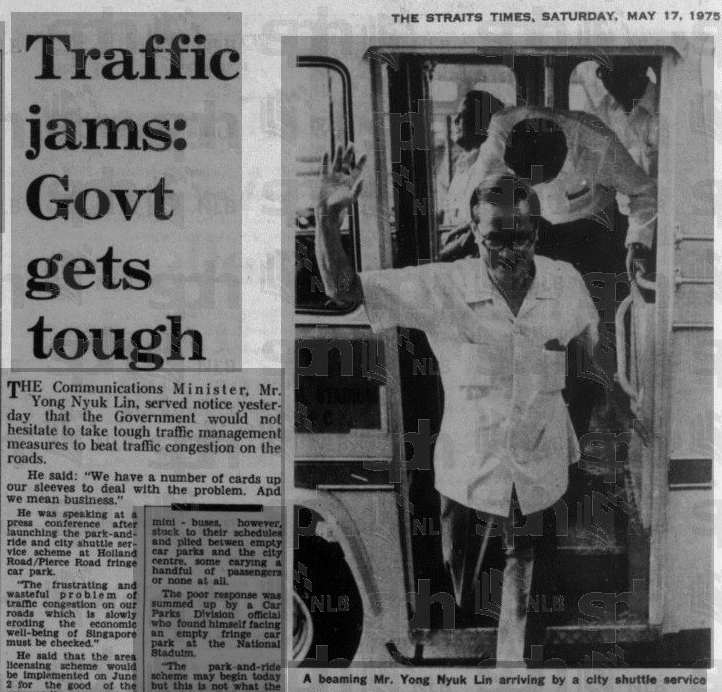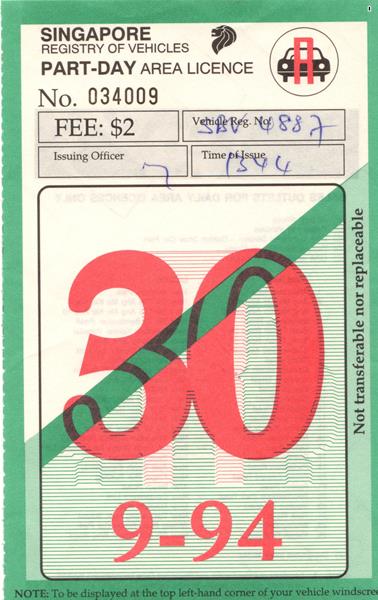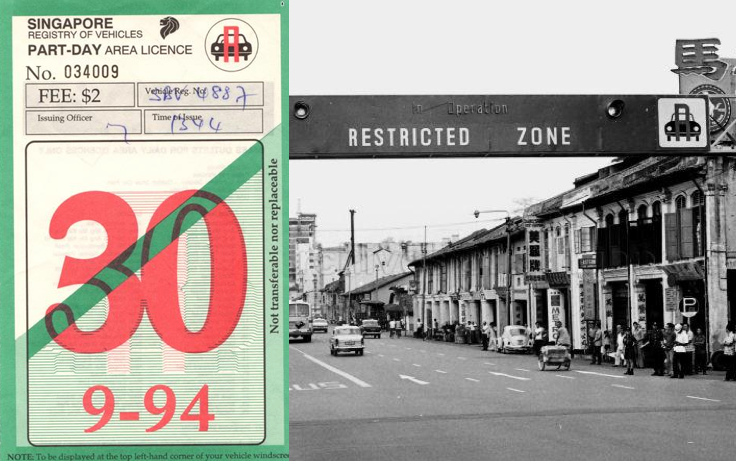Over the years, Singapore has been quite an influencer when it comes to urban transport policy innovations.
An example of this is the policy to charge motorists for entering the Central Business District (CBD).
Its effectiveness has prompted many cities all over the world to follow suit. Motorists in many cities all over the world now have Singapore to thank for their pain and frustrations with the need to pay tolls to get into town.
Back in the 1960s and 1970s, transport took a back seat, as the government focused its attention on the more urgent matters of housing, defence, and employment (or unemployment).
Public transportation in those days was messy and woeful with many different bus operators and pirate taxis plying the streets.
And to make matters worse, in a time when the dreaded Certificate of Entitlement (COE) had not existed yet, private vehicle ownership grew rapidly, which added to our crowded roads.
Growth of private cars a problem
In 1961, Singapore had about 70,000 private cars, but by 1974 this figure hit 137,470.
As incomes grew, the car population was set to grow further, and our roads, particularly those in the CBD, had trouble coping with the vehicle population.
New tax rates for cars were introduced by the government in 1972 and 1974 in order to curb car ownership, but this was not a long term solution.
There was also a particular need to curb traffic congestion within the CBD area.
 ST on May 17, 1975. Source: NewspaperSG
ST on May 17, 1975. Source: NewspaperSG
Yong Nyuk Lin, who was the Minister for Communications which oversaw transport in those days, said in Parliament in 1974:
"As at 28th February, there were 137,470 private cars registered for use on our roads. If the growth rate of 17 per cent per annum in new registrations in the last three years continues, it will be impossible to solve our traffic problems. We cannot increase our roads by a similar percentage each year. And in the CBD, the increase of road capacity is very limited, despite road widening and one-way traffic flows. The longer we delay action, the more painful and costlier the solutions will be. When car taxes went up in October 1972, all car owners were put on notice. All present and future car owners have to recognise the limits of our road capacity, especially in the CBD. By a combination of taxes on cars, parking fees, restricted entry into the CBD during peak hours and peripheral parking and reserved bus lanes, we must and can ensure maximum freedom of access to the CBD. This is essential to the vitality of the CBD and on our whole economy."
Measures to reduce congestion in CBD
So, the government decided to adopt a new measure to reduce traffic congestion within the CBD area -- the Area Licensing Scheme (ALS).
Targeting motor cars, the ALS began on Jun. 2, 1975. Under the scheme, the CBD area was designated a restricted zone at certain times, which required motorists to pay a toll to enter.
[caption id="" align="aligncenter" width="585"] Restricted zone in CBD area. Source: Wikipedia[/caption]
Restricted zone in CBD area. Source: Wikipedia[/caption]
 Source: NAS
Source: NAS
The toll was paid through the purchase of an ALS licence from designated sales booths.
 Then Minister of Communications Yong Nyuk Lin at an ALS licence sales booth. Source: NAS
Then Minister of Communications Yong Nyuk Lin at an ALS licence sales booth. Source: NAS
It was a pretty manual and paper-based system in those days. After paying their tolls, drivers would be issued a licence that looks like the one below to be displayed on their vehicles.
 Image via Singapore Memory Project
Image via Singapore Memory Project
Wardens would monitor cars entering the restricted zone to ensure that the valid licences were displayed.
This system of monitoring was prone to the occasional human error and oversight, but the ALS itself proved to be effective in reducing the amount of traffic in the CBD.
[caption id="" align="aligncenter" width="440"] Image via[/caption]
Image via[/caption]
The ALS would last till 1998, when it was replaced by the angst-inducing Electronic Road Pricing (ERP) system.
[related_story]
First in the world with this scheme
Singapore was the first country in the world to have successfully adopted and implemented area licensing as a policy measure for traffic regulation within demarcated zones.
And its effectiveness in curbing traffic congestion within the CBD area over the years have influenced other cities into following suit with their own adaptation of the practice.
Interestingly though, most cities that have adopted the measure or were keen to do so, only went ahead in the 2000s.
London and Stockholm implemented congestion charges to their city centres in 2003 and 2007 respectively. Meanwhile, similar schemes are still in the proposal stages for cities like New York City and San Francisco.
[caption id="" align="aligncenter" width="2930"] Signs demarcating a restricted zone in London. Source: Wikipedia[/caption]
Milan has also implemented a variation of the congestion charge known as the Ecopass with the aim of reducing traffic and air pollution.
[caption id="" align="aligncenter" width="480"] Ecopass zone in Milan. Source: Wikipedia[/caption]
Ecopass zone in Milan. Source: Wikipedia[/caption]
Well, it certainly looks like Singapore was pretty ahead of the curve in making motorists' lives difficult solving this problem.
Over the years, the government has also introduced other measures like the COE to curb car ownership to ensure that our roads can cope with the vehicle population.
Recently this year, the government also announced that Singapore's vehicle growth rate will be cut to zero for all private passenger cars and motorcycles.
Top image from Singapore Memory Project and NAS.
If you like what you read, follow us on Facebook, Instagram, Twitter and Telegram to get the latest updates.

